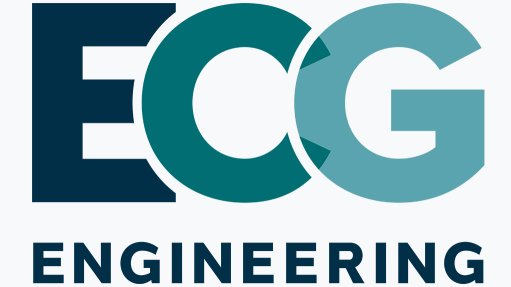Sappi reports ‘disappointing’ Q2 results, dragged down by European market
JSE-listed paper, pulp and packaging group Sappi recorded a 68% drop in operating profit for the second quarter of the year to $40-million, down from $125-million in the 2012 equivalent period, dragged down by worse-than-expected European market conditions.
“The results were disappointing. Although we expected operating profit for the second quarter to be lower than that of the first quarter, the actual performance was weaker than expected. This was owing to weaker European market conditions and an inability to implement any meaningful coated graphic paper price increases in Europe during the past quarter. This led to a weak overall group performance,” CEO Ralph Boëttger said in a statement.
The group’s Southern African business had, as expected, performed reasonably well, despite being negatively impacted on by the planned extended shutdown of the Ngodwana mill, in Mpumalanga, as a result of the conversion of the pulp mill to dissolving wood pulp, as well as the relatively weak local demand for paper products.
Special items for the quarter included a plantation price fair value adjustment of $96-million, largely as a result of the revaluation of the softwood plantation assets that previously supplied the Ngodwana softwood pulp line.
Further, various assets at the Tugela and Stanger mills were impaired for which a charge of $52-million was recorded in the quarter. These charges related to the ongoing optimisation process in the Southern African paper and paper packaging business.
Sappi’s specialised cellulose and North American businesses continued to perform well, while the conversions from paper pulp to dissolving wood pulp at the Ngodwana mill and the Cloquet mill, in North America, progressed according to plan.
Shutdowns at the Ngodwana and Cloquet mills relating to the specialised cellulose expansion projects during March and April were both successfully completed. Dissolving wood pulp production is expected to start at both plants before the end of June, with paper pulp being produced for internal use in the interim.
Meanwhile, in the North American business, strong paper sales volumes offset weaker paper sales prices, as well as the decline in paper pulp sales, owing to conversion preparations at the Cloquet mill.
Coated paper sales volumes increased by 6% over the equivalent quarter last year and by 2% over the prior quarter.
“We were unable to fully implement the January price increases during the quarter.
Net finance costs for the quarter of $40-million are $11-million below that of the equivalent quarter last year as a result of the refinancing of higher-cost debt in the past year,” Boëttger said.
This increased capital expenditure related primarily to the investments in expanding the group’s dissolving wood pulp capacity.
Looking ahead, Boëttger said Sappi would remain focused on implementing its three-tier strategy, which consisted of optimising its paper businesses, expanding its specialised cellulose business and reducing its debt.
“Heading to the second half of the year, we expect market conditions for our paper businesses, particularly in Europe to be weaker than previously envisaged. Demand and pricing remain under pressure and input costs, particularly for pulp, are likely to remain high.
“The announced January price increases in Europe for coated wood-free paper were only marginally successful, and further price increases were announced during the quarter for implementation in April,” he indicated.
These increases had, however, to date, not been sufficient to restore margins, given rising input costs.
“Despite the interventions and major cost reductions that have taken place, we expect the European business to only achieve a break-even operating profit, excluding special items for the full year,” Boëttger noted, adding that this performance necessitated further action and that Sappi was evaluating various options that could result in capacity and cost reductions in its European business.
Further measures were also being implemented in the Southern African business.
“We expect net debt to peak at about $2.4-billion in the third quarter and, thereafter, decrease to about $2.2-billion by the end of the financial year.
“Despite the generally tough market conditions and the one-off impact of our major transitionary projects on the current year’s performance, our actions and investments will position the group well for improved performance from 2014 onwards,” Boëttger assured shareholders.
Article Enquiry
Email Article
Save Article
Feedback
To advertise email advertising@creamermedia.co.za or click here
Comments
Press Office
Announcements
What's On
Subscribe to improve your user experience...
Option 1 (equivalent of R125 a month):
Receive a weekly copy of Creamer Media's Engineering News & Mining Weekly magazine
(print copy for those in South Africa and e-magazine for those outside of South Africa)
Receive daily email newsletters
Access to full search results
Access archive of magazine back copies
Access to Projects in Progress
Access to ONE Research Report of your choice in PDF format
Option 2 (equivalent of R375 a month):
All benefits from Option 1
PLUS
Access to Creamer Media's Research Channel Africa for ALL Research Reports, in PDF format, on various industrial and mining sectors
including Electricity; Water; Energy Transition; Hydrogen; Roads, Rail and Ports; Coal; Gold; Platinum; Battery Metals; etc.
Already a subscriber?
Forgotten your password?
Receive weekly copy of Creamer Media's Engineering News & Mining Weekly magazine (print copy for those in South Africa and e-magazine for those outside of South Africa)
➕
Recieve daily email newsletters
➕
Access to full search results
➕
Access archive of magazine back copies
➕
Access to Projects in Progress
➕
Access to ONE Research Report of your choice in PDF format
RESEARCH CHANNEL AFRICA
R4500 (equivalent of R375 a month)
SUBSCRIBEAll benefits from Option 1
➕
Access to Creamer Media's Research Channel Africa for ALL Research Reports on various industrial and mining sectors, in PDF format, including on:
Electricity
➕
Water
➕
Energy Transition
➕
Hydrogen
➕
Roads, Rail and Ports
➕
Coal
➕
Gold
➕
Platinum
➕
Battery Metals
➕
etc.
Receive all benefits from Option 1 or Option 2 delivered to numerous people at your company
➕
Multiple User names and Passwords for simultaneous log-ins
➕
Intranet integration access to all in your organisation

















